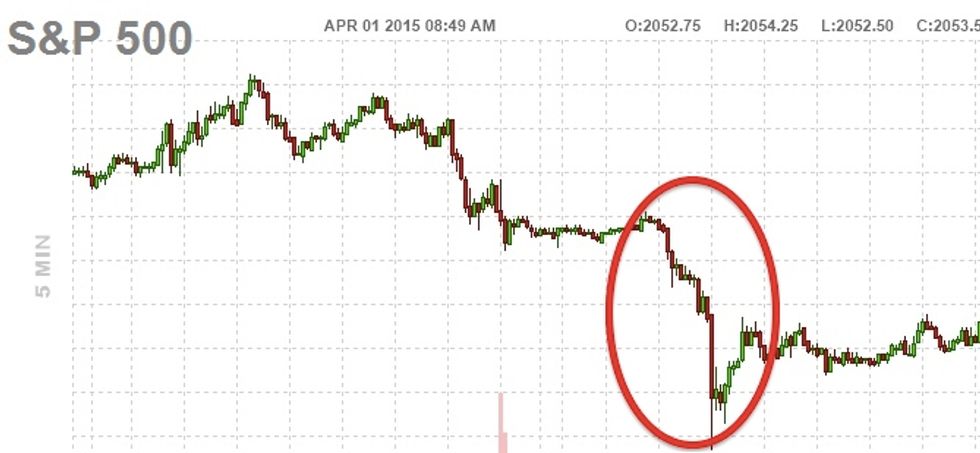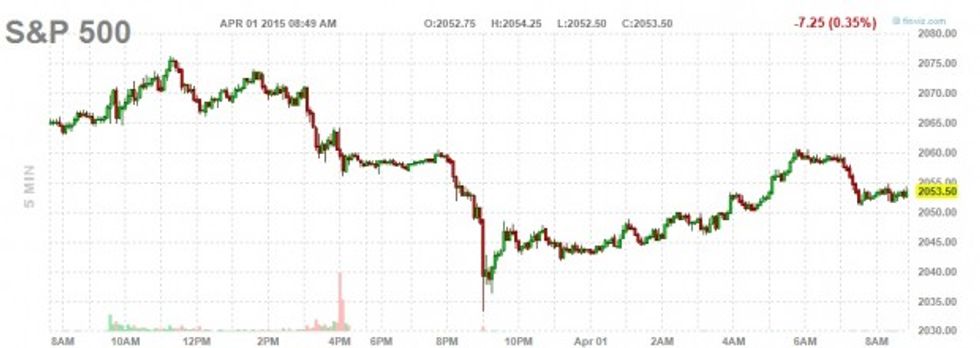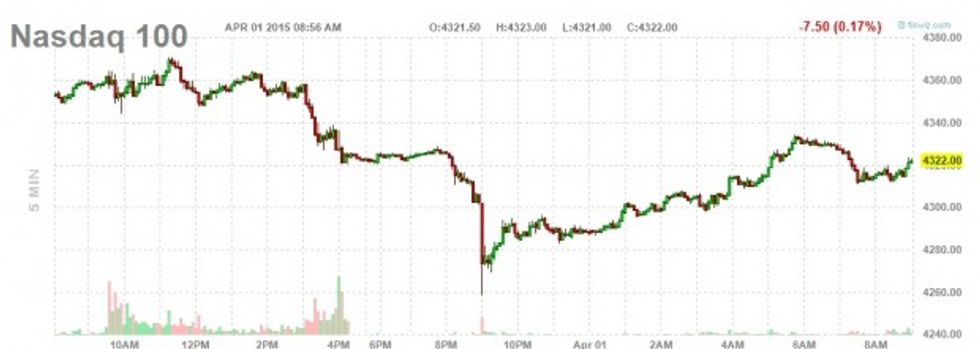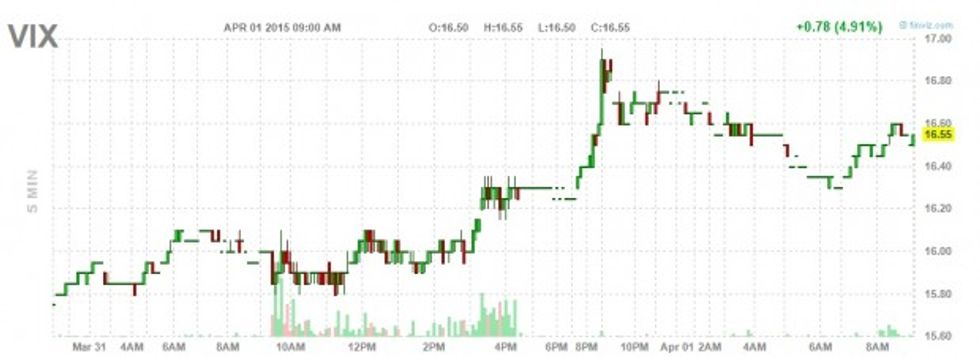
Image via FinViz

For a brief moment Tuesday night, stocks collapsed.


Each of the major U.S. stock indexes was down more than 1 percent for a short time around 9 p.m. EDT, and the VIX, which measures volatility, spiked as futures plunged.

JonesTrading's David Lutz reported that the "crush[ing]" of the S&P and NASDAQ were all traders could talk about Wednesday morning, and Business Insider's Sam Ro noted the severity of the move.
"S&P 500 futures contracts are tied to the S&P 500, and [sic] index of 500 companies," Ro wrote. "So a 1% move in a matter of seconds is a big deal."
Business Insider called the Tuesday night nosedive "scary," noting that there didn't seem to be one clear culprit — disappointing economic news or otherwise — to have sparked the plunge.
"I can't point my fingers to anything that would have triggered this," AMP Capital Investors' Nader Naeimi. "I guess that's how big corrections often start."
But it's important to remember that, despite the relatively smooth upward sailing of the past six years, volatility is a feature of the stock market.
"Stock prices will always be far more volatile than cash-equivalent holdings," investing guru Warren Buffett wrote in his February letter to Berkshire Hathaway shareholders. "Volatility is far from synonymous with risk."
The "Oracle of Omaha" continued:
If the investor, instead, fears price volatility, erroneously viewing it as a measure of risk, he may, ironically, end up doing some very risky things. Recall, if you will, the pundits who six years ago bemoaned falling stock prices and advised investing in “safe” Treasury bills or bank certificates of deposit. People who heeded this sermon are now earning a pittance on sums they had previously expected would finance a pleasant retirement. (The S&P 500 was then below 700; now it is about 2,100.) If not for their fear of meaningless price volatility, these investors could have assured themselves of a good income for life by simply buying a very low-cost index fund whose dividends would trend upward over the years and whose principal would grow as well (with many ups and downs, to be sure).
In January, UBS analyst Julian Emanuel noted that heightened volatility can indicate a coming crash.
"The manic market movement - sharp plunges and even sharper surges - is not unlike the movement seen prior to major market tops in 2007 and 2000," Emanuel wrote.
But volatility alone is no reason to abandon the stock market.
"Taken together, markets will probably see more peaks and valleys this year," wrote BlackRock's Russ Koesterich Tuesday evening, "but for investors with a long time horizon, remaining invested pays off."
In other words: Slow and steady wins the race.
—
Follow Zach Noble (@thezachnoble) on Twitter